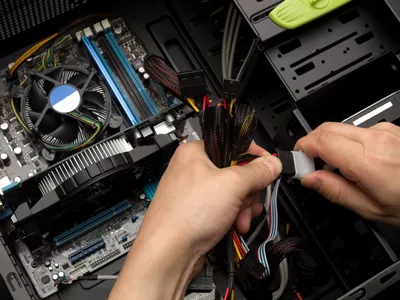
How to recover data from dead iPhone 14 | Stellar

How to recover data from dead iPhone
Summary: Recovering data from a dead iPhone is precarious if you don’t acquire knowledge about your iOS device. Be wary of how your device works and its data backup options to avert data loss problems in the future. If your iPhone has turned dead because of a major technical glitch, you can recover the data stored in it using a reliable data recovery software. This blog encapsulates all such concrete details with a step-by-step guide to recover data from dead iPhone.
iPhone is one of the most affluent smartphones loaded with advanced features. Most people invest in it because its upbeat features and advanced technology intrigue them. Every time Apple announces a new upgrade or introduces new features to its iOS software upgrade, iPhone fans dig deep to learn more about it.
If your iPhone is dead and not working at all, and you want to learn how to recover data from dead iPhone, this blog is exclusively for you.
## **Why would an iPhone suddenly go dead?**These are the possible reasons why iPhone turns dead or blank for hours:
- A defective charging cable or adapter that doesn’t perfectly pair with your iOS device.
- A recent iOS update that triggered some unforeseen software error in your iPhone.
- Faulty or failed hardware, like a battery or a logic board that needs to be replaced.
In either of the above-mentioned conditions, your iPhone will stop responding to any command. Turning the device off and restarting works in rare circumstances, but not always. In such bleak situations, you can try to fix your dead iPhone using these tips:
- Keep a close watch over the charging cable or power adapter and fix the loose ends.
- Put your dead iPhone on charge for at least an hour.
- Connect your iPhone to iTunes or put it on Device Firmware Update (DFU) mode.
- Seek immediate assistance from Apple Support Services.
If these attempts won’t bring your iPhone back to life, certainly it has some major technical glitch that only Apple experts can address. Before submitting your device for the same, recover all the data stored in it. Follow these DIY solutions to recover data from dead iPhone:
### **Use iTunes to Recover Data from Dead iPhone**iTunes is one of the most coveted options to recover data recovery from dead iPhone. However, to use this method, your iPhone should be in sync with iTunes, and you have to periodically take data backup on it. Observe the steps to keep data backup on iTunes:
- Connect your iPhone to your computer and open iTunes to login.
- From the menu bar at the top of the iTunes window, select File > Library > Organize Library.
- Next, select Consolidate files to organize the Library screen and press OK.
- Once you do that, copies of any files that were not in the iTunes Media folder will be added to your iTunes Media folder.
- At the same time, take the opportunity to eliminate all the duplicate files taking unnecessary space on your hard drive. However, before making this move, save a copy of the original files in your iTunes Media Folder.
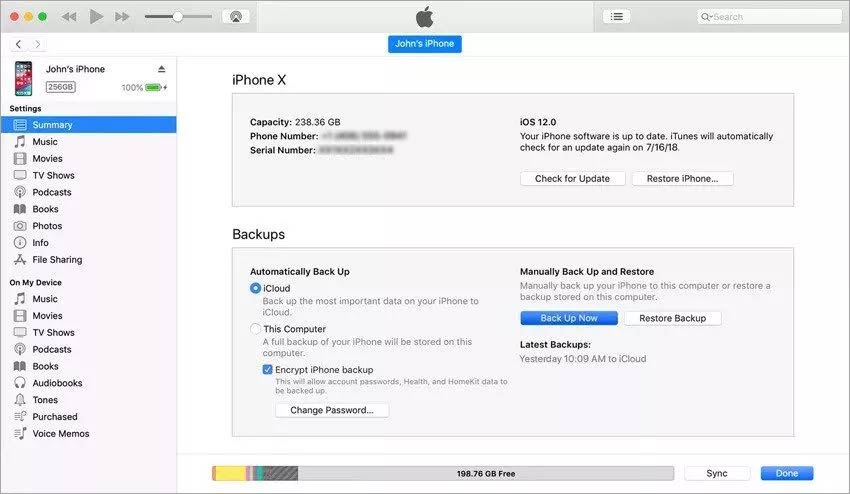
If you have been practicing the above steps for long, then simply connect your device with your computer using a USB cable and follow steps to recover data from iTunes backup:
- Connect your iPhone to your computer and open iTunes.
- Select your iPhone in the main iTunes window or select it from Finder.
- The move will prompt a new set of instructions on iTunes with options to backup data. You need to click on Restore Backup to retrieve your dead iPhone’s data.
- Several backup options will prompt on your computer. You can choose a selected set of files to restore a specific file or all of them.
- Once selected, the desired number of files/data to restore, press Restore, and wait. The move may restart your iPhone. If not, your device will suffer a more serious hardware failure that only technical experts can fix.
Pro Tip: If found dead, let your iPhone remain off for as long as possible to avoid data overwriting.
Use iCloud to Recover Data from Dead iPhone
If you are proactively using iCloud to maintain data backup, there is a fair chance to recover your dead phone’s data from it. You can directly recover data from iCloud on another iPhone that doesn’t necessarily require connection to a laptop or computer. All you need is an iPhone that can be turned on at least and let you through the initial steps to login to your iCloud. Don’t forget to erase your dead iPhone before continuing on the new one; otherwise, you won’t get to perform the initial set-up. Follow the steps below to restore dead iPhone’s data from iCloud Backup:
- Turn on the working iPhone and perform the initial setup procedures till you get through Apps & Data. Tap on Restore from iCloud Backup option and sign in with your Apple ID.
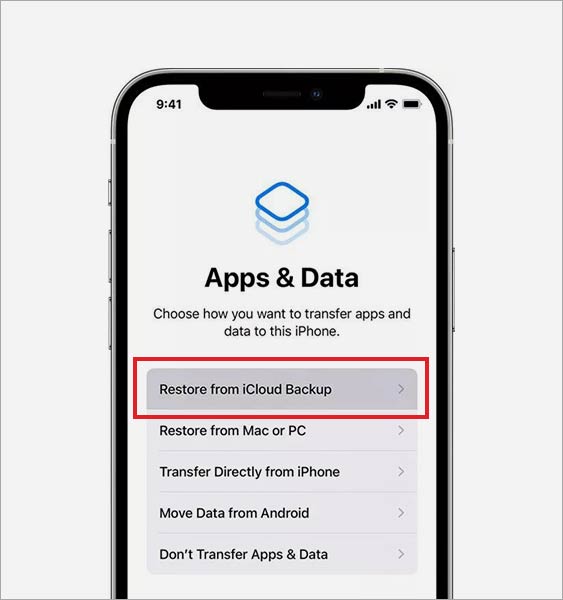
- A window will prompt you with all backups available for restoring. Select the most recent one that contains all the data you wish to retrieve from your dead iPhone.
- Patiently wait for the data transfer procedure to finish.
- In the data transfer procedure, at some point, you might be asked to enter your Apple ID once again. Enter details to keep the action going.
- Once done, you’ll get a notification of successful data transfer.
You can also transfer all your dead iPhone data to a new one by inserting its SIM card in the new iPhone. Learn here how to Transfer Data from Old iPhone to New iPhone .
Use a Reliable Data Recovery Software
Your last respite is a professional data recovery software in case a vast amount of data from dead iPhone, like photos, videos, messages, contacts, etc., remain missing after iCloud recovery. We recommend Stellar Data Recovery for iPhone because it guarantees absolute recovery of lost or deleted data from iPhone, iTunes, and iCloud. Listing some common situations where the software can help:
- If iTunes fails to restore data after unlocking the disabled iPhone.
- If some data is found missing after restoring data from iTunes or iCloud.
- Instead of restoring all files from the iPhone, you wish to recover only some selected files.
You can download the demo version of the software for assessment and buy the software to activate its key functionalities. It will activate via activation key that will be sent on your email once you purchase the software. Read this KB to learn How to Activate Stellar Data Recovery for iPhone . Additionally, using the Toolkit version of the software, identified as Stellar Eraser for iPhone , you can permanently remove all the sensitive data stored in your dead iPhone so it won’t fall into the wrong hands.
Conclusion:
Avid iPhone users know when to stop playing with their iOS device to let it reset in case of a technical glitch. Nevertheless, not all iPhone users are aware of this practice. Consequently, we panic and keep on switching off and on our smartphones when it hangs.
If your phone turns blank or dead, don’t panic and stop using your device for some time. Let it rest and resume its function. Otherwise, you’ll end up losing all the memories stored in it. This blog aimed to help you understand the grim consequences and smart ways to recover data from iPhone if your device turns dead. In case you are unable to recover data on your own using Stellar Data Recovery for iPhone, you can avail Data Recovery Lab-Services where our experts can recover all the data from your dead iPhone.
FAQs:
What to do if iPhone is not working?
If your iPhone has stopped responding to any command and you can’t even turn it off, then force shutdown and restart it. Swiftly press and release the volume up button first and repeat the same with volume down button. Now, press and hold the side button and once the Apple logo appears on the screen, release the side button too.
Why is my phone unresponsive?
Your iPhone’s touchscreen can be unresponsive for reasons like a brief hiccup or glitch that your smartphone’s inner system can’t detect or render it unresponsive. Sometimes, touch screen becomes unresponsive due to water damage or app glitch, or virus attack.
Why did my iPhone screen go black?
In iPhone, black screen appears due to software or hardware issues. Firmware modifications, dropping the iPhone, iOS upgrade/downgrade, and jailbreaking, are some other common reasons behind the black screen error. Learn some great solutions to overcome the black screen of death error .
How to recover deleted photos after deleting from ‘Recently Deleted’ on iPhone
The Recently Deleted folder in the Photos App on iPhone is there to recover accidentally deleted photos. However, even if your important photos are deleted from ‘Recently Deleted’ you are not yet out of luck. This post shares how to recover deleted photos after deleting them from ‘Recently Deleted’ on iPhone.
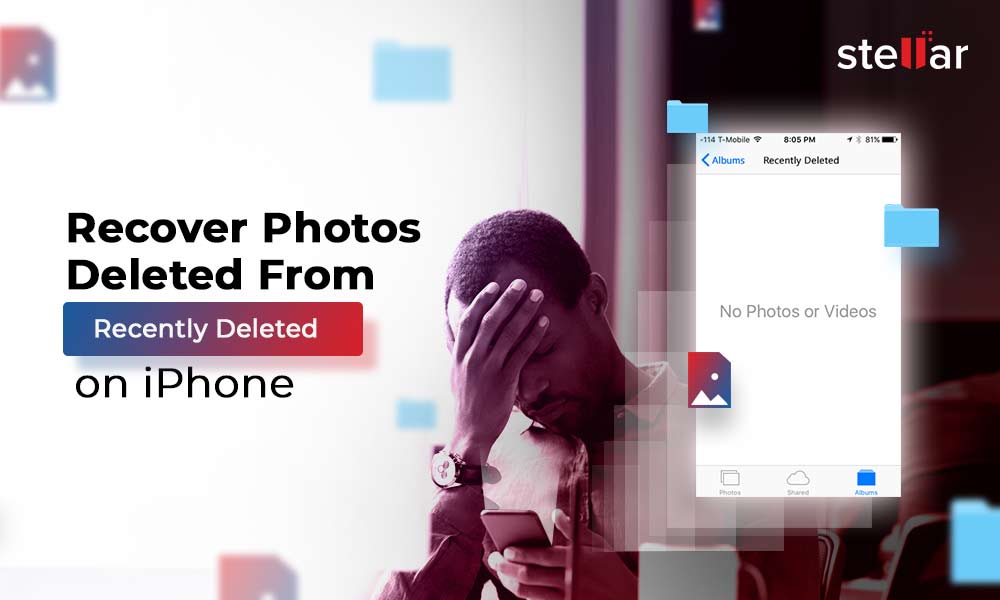
‘I deleted some important pictures on my iPhone and also deleted them from the ‘Recently Deleted’ folder. Is there any possible way to recover photos after permanently deleting them from the iPhone?’
When you delete photos from your iPhone, they first go to the ‘Recently Deleted’ folder of the Photos App. Here the photos remain for 30 days. Hence, any picture deleted 30 days ago automatically gets removed after this period, and this time permanently.
However, sometimes you may accidentally delete valuable pictures too. To make the situation worse, even remove image files from ‘Recently Deleted’ or realize the mistake 30 days after deleting!
In any case, can you get photos back after deleting from ‘Recently Deleted’ on your iPhone?
This post addresses the problem situation of permanently deleted photos from iPhones and finds the appropriate solution.
Let’s read on…
Understanding permanently deleted photo recovery from iPhone
You can recover deleted photos from your iPhone after deleting them from the Recently Deleted folder or 30 days of automatic deletion.
Of course, backups — iCloud and iTunes are the immediate go-through solution in such a case. However, Apple backups have their own disadvantage. Photo recovery with iCloud and iTunes results in the loss of your current data on your iPhone!
That’s the reason, iCloud and iTunes are frustrating when you want to get back only a few photos.
So, if you are using another backup service such as Google Drive or OneDrive for iPhone photo backup, they are more convenient.
In addition, apart from backup, iPhone recovery software is just the right solution. It works even when you don’t have a backup or don’t want to eliminate your existing data on your iPhone or iPad.
1. Recover ‘Recently Deleted’ photos from iCloud backup
Use an iCloud backup to recover deleted photos from your iPhone after 30 days of deleting them from the ‘Recently Deleted’ folder. iCloud backup is the best solution to retrieve permanently deleted photos from iPhone free.
Just get on to the below steps to recover deleted photos from iCloud:
- On your iPhone, navigate to Settings > General > Reset> Erase all Contents and Settings.

- Select Erase Now in the dialog box and follow the prompts until you reach the Apps & Data screen.
- Click on Restore from iCloud Backup.
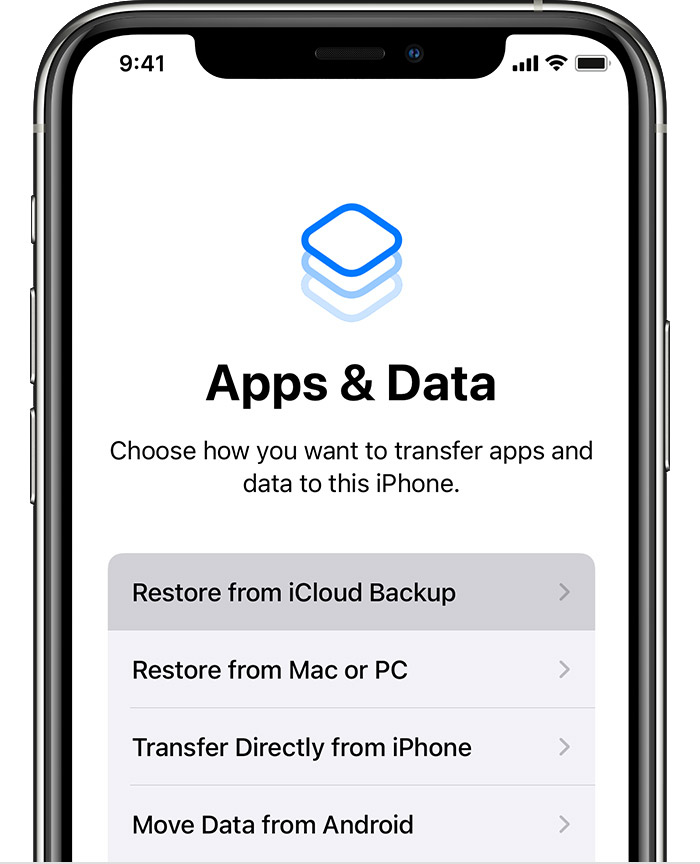
- Sign in to your iCloud account.
- Select the recent backup from the list that has the deleted pictures. Click Restore to get back the deleted photos on your iPhone.
2. Recover permanently deleted photos from iTunes
If you have an iTunes backup, look for the deleted photos after deleting from ‘Recently Deleted’ in your iTunes backup.
Below are the quick steps:
- Connect your iPhone to your PC or Mac and launch iTunes.
- Click on your iPhone under the device list and select the recent backup date that may contain the permanently deleted pictures.
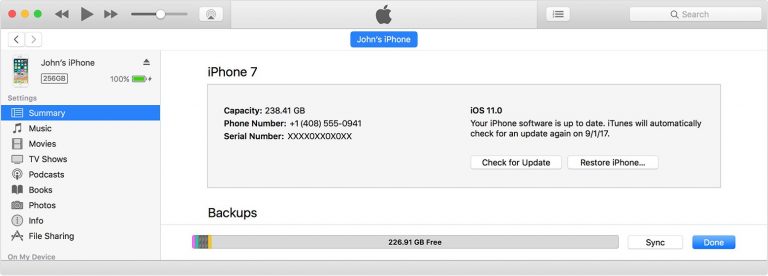
- Click Restore Backup.
That’s it. You get back the deleted photos on your iPhone. However, this will replace the current data on the iPhone with the old backup data.
3. Recover recently deleted photos from cloud storage
iPhone users, who don’t completely rely on iCloud and iTunes for backup, use third-party cloud backup solutions. If you are one of those, check your cloud storage for permanently deleted photos on your iPhone. Cloud backups such as Google Drive, iCloud, Dropbox, OneDrive, etc., are efficient ways to save and protect your photos on your iPhone from permanent loss. You can restore photos on a PC , Mac, or iPhone by using cloud storage.
4. Recover Recently Deleted Photos with iPhone recovery software [Recommended]
Some of you may not have photos backed up in iCloud or iTunes. It’s also possible you couldn’t find the desired picture in the backup. In any case, use the best iPhone recovery software to get pictures back after deleting from Recently Deleted on iPhone.
Try one of the popularly used Stellar Data Recovery for iPhone . It is compatible with not just old iPhones like iPhone 6, 7, 8, X, etc., but also the latest series of iPhone 15. You also get the latest iOS 17 support.
Stellar Data Recovery for iPhone can help to recover photos from the iPhone without backup. Additionally, you can retrieve lost or deleted contacts, messages, chat messages, Notes, Reminders, etc.
Besides, when you recover photos by using iTunes or iCloud, it gets back all data from the backup file whereas with the software you can select and recover only what you require. Unlike photo recovery from backup, the software doesn’t replace the existing data with old backup data on your iPhone.
Here are the steps to recover deleted photos after deleting them from the Recently Deleted folder on your iPhone:
- Connect your iPhone to your PC or Mac computer.
- Download and launch Stellar Data Recovery for iPhone on a computer.
- On the first screen, select Recover from iPhone on the left pane. If required, you can choose the ‘Recover from iCloud’ or ‘Recover from iTunes’ option.

- Check-in Camera Roll and Photo Stream and click Next.

- The software scans and displays the recovered pictures. See preview, select, and save the desired photos.
Conclusion
An iPhone recovery software is the perfect approach to recover deleted photos from an iPhone after 30 days of deleting them from the ‘Recently Deleted’ folder. We recommend Stellar Data Recovery for iPhone. It is fast and can retrieve permanently deleted photos without affecting the current data of your iPhone. Unlike iCloud and iTunes backup, which annoyingly replace existing data with the old backup data, the software can restore only those photos, which you have deleted.
Take the free trial and ensure that Stellar Data Recovery for iPhone can retrieve permanently deleted photos from your iPhone.
How to Put iPhone or iPad on Recovery mode? (Step by Step Tutorial)
Summary: DFU or Recovery mode is a way to recover your iPhone or iPad using a computer in case of technical issues. Read this post for a step-by-step process of how to enter and exit Recovery Mode and DFU mode on iPhone.
When you run out of solutions to troubleshoot your iPhone, Recovery Mode or DFU Mode comes as a rescue. Whether iPhone stops booting or fails to restore, you can use the functions in iPhone and fix the issue.
But the method to bring an iPhone in DFU or Recovery Mode varies in each iPhone model and iPad.
This post will guide you on how to enter and exit Recovery and DFU Modes in different iPhone and iPad variants. But first, understand what these iPhone functions are and their uses.

What is Recovery Mode and its use?
Recovery Mode uses iBoot to upgrade or restore your iPhone. iBoot is a bootloader program for iOS devices. Recovery Mode helps install the same or above iOS firmware version already on your iPhone. The iPhone screen in Recovery Mode prompts to connect iPhone to iTunes, showing a computer image.
Recovery Mode helps fix iPhone updates or restore issues, such as iPhone stuck at the Apple logo , unable to open the locked iPhone or want to reset iPhone but forgot iPhone passcode .
What is DFU Mode and its use?
Device Firmware Update or DFU mode lets your iPhone connect with iTunes on the computer without iBoot. As DFU mode doesn’t use iBoot, you can make changes in the operating system of the iOS device. An iPhone in DFU mode has a completely black screen.
Putting iPhone into DFU mode is the solution when Recovery Mode doesn’t resolve the problem. DFU mode can restore or upgrade iPhone. This mode is also commonly used to downgrade or jailbreak iPhone s.
Caution — you may lose all your iPhone data!
If you are entering DFU mode, make sure to back up your iPhone data . DFU mode permanently erases iPhone data . So always back up your videos, photos, messages, chats, Notes, etc., either to iCloud or iTunes.
However, if you have lost iPhone data and don’t have a backup, then immediately download iPhone data recovery software — Stellar Data Recovery for iPhone . The software helps to restore lost or deleted iPhone contacts, call logs, photos, videos, text, FaceTime, audio, chats, Calendar, Notes, Safari bookmarks, etc. It is quick to recover and extremely user-friendly.
What is required to perform Recovery and DFU modes in iPhone?
- Windows or Mac system.
- Lightning to USB cable.
- iTunes updated to the latest version on your computer.
How to put iPhone 6 and earlier versions in Recovery Mode
Follow the below steps to enter Recovery Mode on iPhone 6, iPhone 6s, iPhone 6s Plus, iPhone 5s, iPhone 5, iPhone 4s, and iPhone 4.
- Connect your iPhone to your PC using USB Lightning Cable and launch iTunes.
- Press and hold down the Home and Power button to turn the iPhone.

- Then connect the USB cable to iPhone and turn it on by holding the Home button.
- Continue to hold the Home button until a pop-up appears informing ‘an iPhone has been detected in recovery mode’ on your system.
- In Recovery mode, you can either restore the iPhone, set it up as new, or just recover your backups.

How to put iPhone 7 in Recovery Mode
It’s easy to enter Recovery Mode on iPhone 7 or iPhone 7 Plus. Follow the below steps:
- Turn off your iPhone 7 and connect it to your Mac or Windows computer.
- Ensure iTunes or Finder is running on the system.
- Press and hold the Power and Volume down button for 10 seconds.
- While continuing to hold the Volume down button, release the Power button.

- Release the button if you see the iTunes has detected an iPhone in recovery mode message on your system.
How to put iPhone 8 in Recovery Mode
If you want to enter the Recovery Mode on iPhone 8 and its variants, follow the below steps:
- Connect your iPhone 8 to your Mac or Windows system with a USB cable.
- Next, press and release the following buttons in a sequence Volume Up button, Volume Down, and Side button until your device reboots. Continue holding the Side button, even after seeing the Apple logo appear.
- Release the Side button once the Connect to iTunes logo appears on the iPhone’s display.

- Launch iTunes, and you should see a message stating, “There is a problem with the iPhone that requires it to be updated or restored.” You can choose to Update or Restore your iPhone’s software.
How to put iPhone 11 into Recovery Mode
To enter Recovery Mode on iPhone 11, iPhone 11 Pro, or iPhone 11 Pro Max, follow these steps:
- Connect your iPhone with your Mac or PC and launch iTunes.
- Force restart your iPhone with the following steps:
- Press and release the Volume Up button.
- Press and release the Volume Down button.
- Press and hold the Side button.
- Make sure to release these buttons if you see the recovery mode screen with the “Connect to iTunes” screen.
- Then choose your iPhone in iTunes, and you will see a pop-up saying that your iPhone is in Recovery Mode. Here, you can either update or restore your iPhone.
How to put iPhone 12 into Recovery Mode
Follow the below steps to enter Recovery Mode on iPhone 12, iPhone 12 mini, iPhone 12 Pro, and iPhone 12 Pro Max:
- Update iTunes to the latest version.
- Connect your iPhone to your PC or Mac via Lightning to a USB cable.
- Note: If you are connecting your iPhone to the computer for the first time, click on ‘Trust’ in the Trust This Computer dialog box and follow the prompts.
- Once your iPhone is paired with the computer, press the Volume up button followed by the Volume down button and release.
- Press and continue to hold the Side button until you see the ‘Connect to computer’ screen on your iPhone. While on your computer, you would see the iPhone Recovery Mode message in iTunes, confirming that your iPhone has entered into Recovery Mode. The computer asks you to either Update or Restore your iPhone**.** Click on any based on your requirement.
If you choose Update, iTunes will update your iPhone 12 to the latest iOS release. This won’t lead to any loss of data.
If you select Restore: It will erase iPhone data completely and renew your entire iPhone.
How to put Recovery Mode on iPhone 13
Entering Recovery Mode on iPhone 13 and iPhone 13 Pro has the same steps as iPhone 12. To enter the Recovery Mode, connect your iPhone to your computer and do the following steps in quick succession.
- Press the Volume up button and release.
- Press the Volume down button and release.
- Press and continue to hold the side button until the ‘Connect to iTunes’ screen appears on iPhone.

How to put Recovery Mode on iPhone 14
To use recovery mode on iPhone 14 and iPhone 14 Pro, follows these steps:
- Connect your iPhone to your system with a Lightning cable.
- Now on iPhone, press and quickly release the Volume up, Volume down, and side buttons until you see the recovery mode screen.
- Select your iPhone in the Finder/iTunes window and choose to update or restore your iPhone.

How to exit Recovery Mode on iPhone
It’s easy to exit Recovery Mode on iPhone. Follow the below steps:
- Hold the Home button and Lock button to exit DFU mode on iPhone 6 and earlier versions until your device reboots.
- To exit DFU mode on iPhone 7/7 Plus, hold the Side and Volume Down buttons until the device reboots.
- To exit the Recovery Mode on iPhone 8 or later version, press and hold the Side button until the “Connect to iTunes” screen disappears, and then iPhone should reboot back into iOS.
How to put Recovery Mode on iPad
To enter Recovery Mode on the iPad, follow these steps:
- Connect your iPad to Windows or Mac system using a USB cable.
- For iPad with a Home button: Press and hold the Home button and the Top/Side button until your iPad enters recovery mode.
- For iPad without a Home button: Quickly press and release the Volume Up button, Volume Down button, and the Top button. Keep holding the Top button until the iPad enters recovery mode.

How to put iPhone into DFU mode ?
Follow the below steps to enter DFU Mode on iPhone and its various version:
- Connect iPhone to PC or Mac via USB cable. Note: If the ‘Trust This Computer’ dialog box appears, follow the prompts.
- Once your iPhone is paired with a computer, follow these steps:
How to Enter DFU Mode on an iPhone 8 and later versions
- Press the Volume up button, then Volume down button, and release.
- Quickly press and hold the Side button for about 5 seconds.
- Along with the Side button, press and hold the Volume down button.
- Release the Side button and continue to hold the Volume down button for about 10 seconds.
- Once you see the ‘Recovery Mode’ screen in iTunes on your computer, you have successfully entered the DFU mode. However, the iPhone screen remains black in DFU Mode.
How to Enter DFU Mode on an iPhone 7
- Press and hold the Power and the Volume down buttons for 8–10 seconds.
- Release the Power button and continue to hold the Volume down button.
- Release the Volume down button once your iPhone has entered recovery mode.
How to Enter DFU Mode on an iPhone 6S or Earlier Versions
- Press and hold the Power/Sleep and Home buttons together for 10 seconds.
- Release the Power/Sleep button, but continue holding the Home button.
- Release the Home button once you see iTunes/Finder has detected an iPhone in recovery mode message.
Note: If you see the Apple logo on your iPhone, try again and repeat the above steps carefully.
How to exit DFU Mode on iPhone ?
If you want to exit DFU Mode on iPhone and its variants, follow the below steps:
How to Exit DFU Mode on an iPhone 8 or Later versions
- Press the Volume Up button and quickly release.
- Press the Volume Down button and quickly release.
- Now, press and hold the Side button until the Apple logo appears on iPhone. This indicates your iPhone has exited DFU Mode. Your iPhone would boot to the ‘Lock’ screen in a few seconds. Now, enter your passcode and continue to use your iPhone.
How to Exit DFU Mode on an iPhone 7
Press and hold the Power or Sleep button and the Volume down button until you see the Apple Logo.
How to Exit DFU Mode on iPhone 6 or Earlier versions
Hold the Home button and the Power button of the iPhone simultaneously until Apple’s logo appears on the screen.
Conclusion
Whenever your iPhone and its variants show problems like being stuck at the Apple logo, won’t upgrade, restore, or respond, you can use Recovery Mode and DFU Mode functions to resolve the problem. But don’t forget to back up your iPhone data before using these functions.
However, in any unfortunate incident of data loss while performing the functions, trust Stellar Data Recovery for iPhone – a software that brings back lost data on your iPhone securely.
FAQ
1. Does DFU Mode delete iPhone data?
If you use DFU mode to install something or restore your device, all your iPhone’s data will be erased.
2. Can you enter the recovery mode if your iPhone is disabled?
An iPhone is disabled when a user enters an incorrect password too many times on the lock screen. You should be able to enter the recovery mode using the same steps mentioned above and restore your iPhone to regain access.
3. How to put the iPhone in recovery mode without a computer?
A computer is not necessary to enter the recovery mode on an iPhone. You only need to press the right buttons, depending on your iPhone model, to enter the recovery mode. However, to restore your iPhone – you will need a computer.
How to Recover Deleted Data from iPhone using Stellar Data Recovery for iPhone?
Stellar Data Recovery for iPhone is an ideal tool for efficiently recovering deleted data from iPhone devices. This software can recover photos, videos, messages, call history, calendar, notes, etc. The tool uses an advanced algorithm, which scans through the memory and recovers data from any cases of data loss. In addition, this iPhone data recovery software also uses a very simple and easy-to-use graphical user interface, making the entire process very easy to perform. Therefore, you can follow the below-mentioned steps to recover deleted photos and contacts from an iPhone device using Stellar Data Recovery for iPhone.
Note: Run the latest version of iTunes services before launching the software.
1. Connect your iPhone to a computer via USB cable for recovery from iPhone. Once you launch the software, you have three options to choose from. Recover from iPhone, Recover from iTunes backup and Recover from iCloud backup.
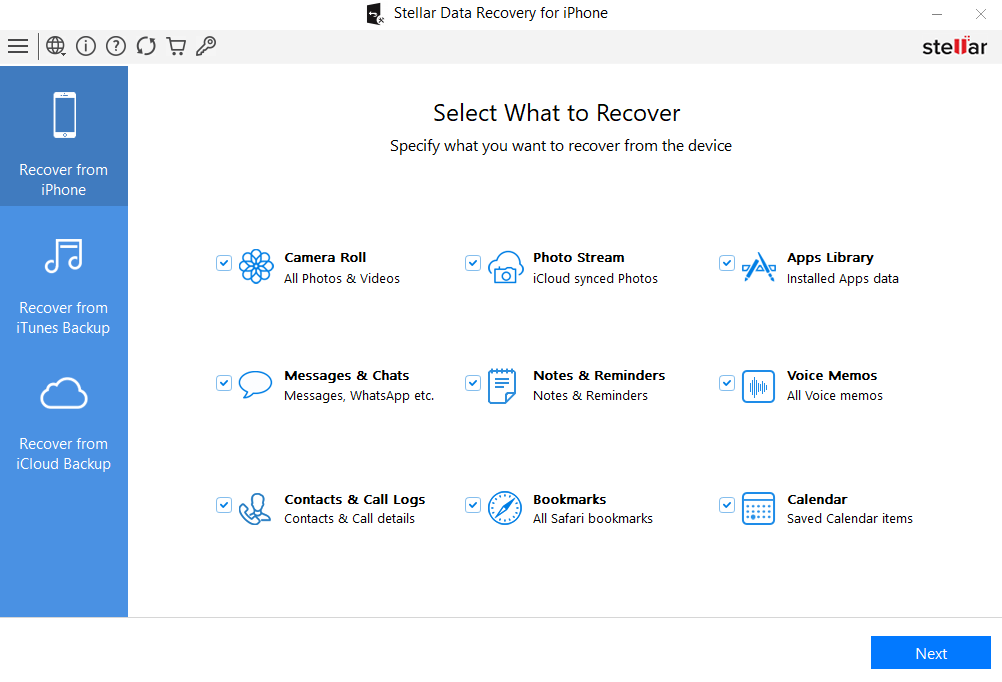
2. Once Computer detects your iPhone, select ‘Recover from iPhone’, choose what you want to recover, and click “next”. It will show you the iOS devices connected to your system. Next, select your device and click “scan.”
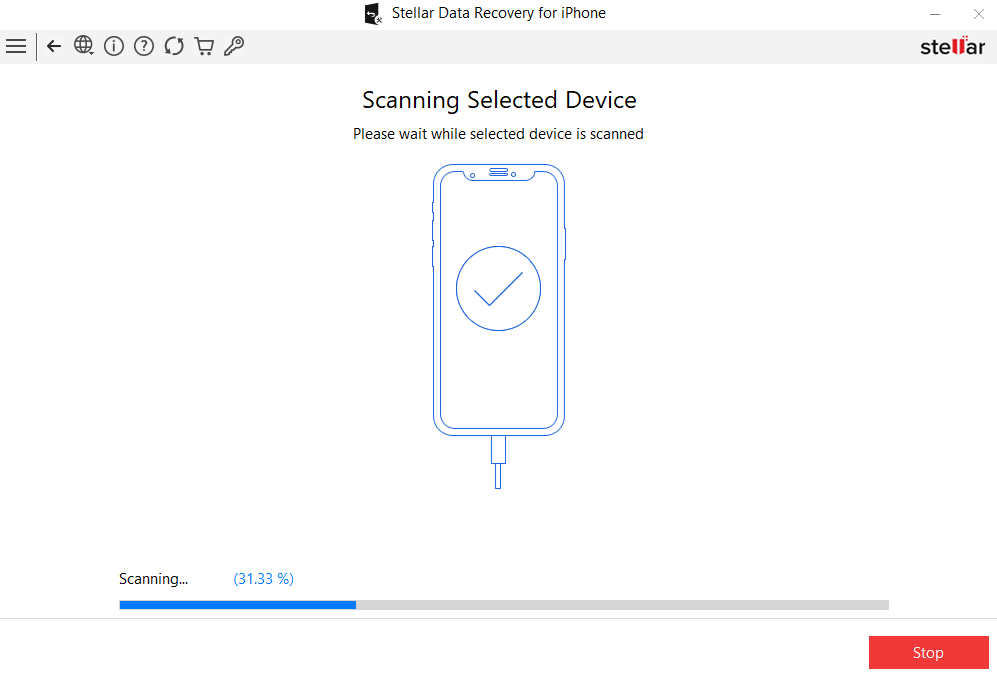
3. After scanning the device, you will see details of all the recoverable items listed in the left-hand side panel.
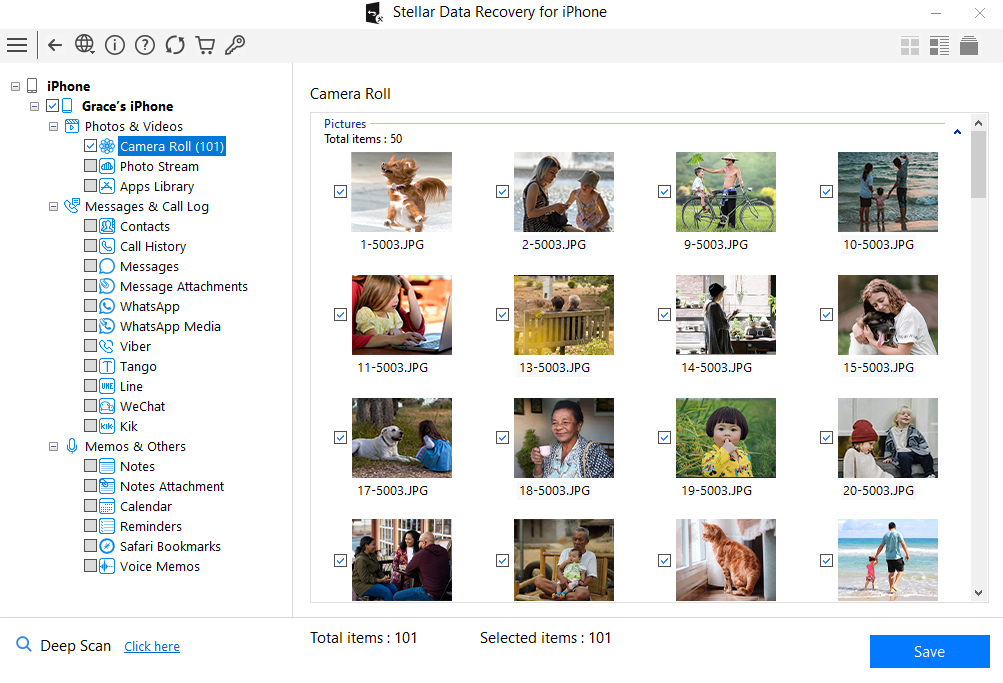
4. Now select and preview the required items by clicking the corresponding checkbox in front of each item.

5. Click on ‘Save’ option to save the recovered items either on the Computer or iPhone depending on chosen location

Stellar Data Recovery for iPhone® Stellar Data Recovery for iPhone® is the best DIY software to recover missing or accidentally deleted Contacts, Messages, Calendar, Photos, Videos, Call History etc directly from iPhone or iPad.
- Title: How to recover data from dead iPhone 14 | Stellar
- Author: Nova
- Created at : 2024-08-20 20:19:08
- Updated at : 2024-08-21 20:19:08
- Link: https://blog-min.techidaily.com/how-to-recover-data-from-dead-iphone-14-stellar-by-stellar-data-recovery-ios-iphone-data-recovery/
- License: This work is licensed under CC BY-NC-SA 4.0.










